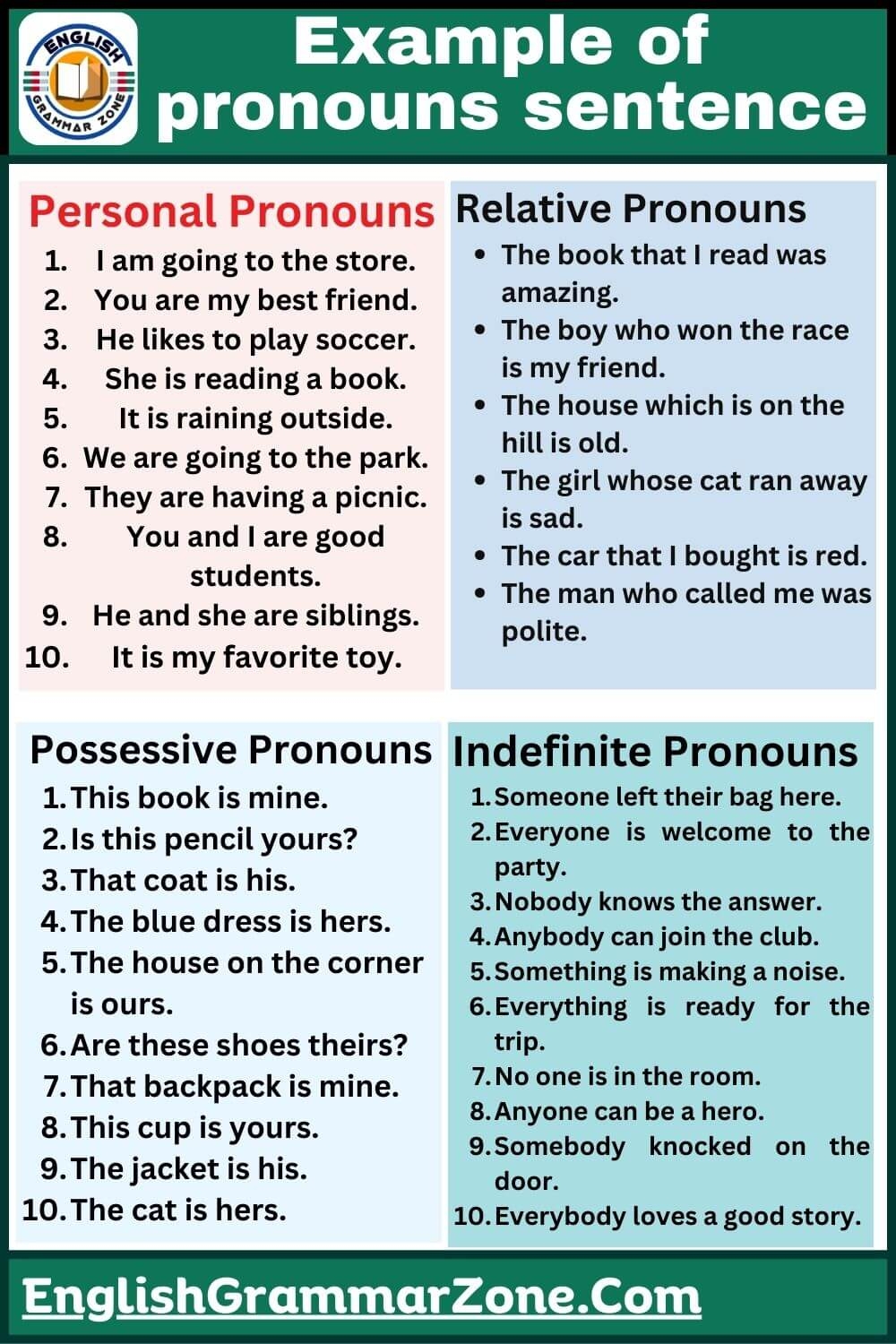Personal pronouns are an essential part of the English language, as they are used to replace nouns to make sentences more concise and less repetitive. They can refer to individuals, groups, or things, and they come in various forms depending on their role in a sentence.
Personal pronouns can be categorized into three main types: subjective (I, you, he, she, it, we, they), objective (me, you, him, her, it, us, them), and possessive (my, your, his, her, its, our, their). Let’s explore some examples of personal pronouns in different contexts.
Examples of Personal Pronouns:
1. Subjective Pronouns:
– I went to the store.
– You are my best friend.
– He likes to play basketball.
– She is going to the party.
– We are going on vacation.
– They are studying for the exam.
2. Objective Pronouns:
– John gave the book to me.
– Can you pass the salt to him?
– She told her secrets to her best friend.
– The teacher gave the assignment to us.
– Please give this to them.
3. Possessive Pronouns:
– This is my car.
– Is that your phone?
– His house is on the corner.
– Her cat is very cute.
– Our team won the game.
– Their house is painted blue.
Personal pronouns play a crucial role in communication, as they help to avoid repetition and make sentences more clear and concise. By using the appropriate personal pronouns, you can effectively convey your message and engage with your audience. Whether you are referring to yourself, others, or objects, personal pronouns are an indispensable part of everyday language.
In conclusion, personal pronouns are versatile and necessary components of the English language. By understanding and utilizing them correctly, you can enhance your communication skills and express yourself more effectively. Practice using personal pronouns in various contexts to improve your language proficiency and convey your thoughts with precision.
